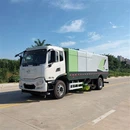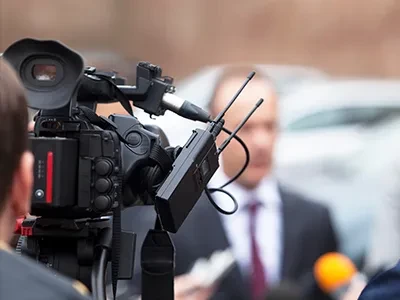Under the requirements of various regions across the country, in order to improve the environment, every construction site requires the installation of sanitation sprinklers. Therefore, a large number of sanitation sprinklers are now being purchased in various regions across the country. So, it is particularly important to ensure the health and longevity of this "urban beautician" and to continue to fight. Next, I will share with you the daily maintenance and upkeep of the green sprinkler.
1: Requirements for water sources for sanitation sprinklers
When the green sprinkler uses rivers and ponds as water sources, the end of the suction pipe needs to be completely submerged in the water. To avoid inhaling stones or a large amount of sediment or floating debris, the end of the suction pipe is generally equipped with a filtering device, and it is strictly prohibited to remove the filtering device. It is recommended to replenish water in areas with deeper water sources. If the water source is shallow, it is necessary to dig deeper at the suction point in advance to ensure that it does not contain debris or air. The water pump requirements for different sprinklers vary, with clear water pumps requiring no impurities in the water and turbid water pumps requiring no stones or excessive sediment in the water.
2: The inlet pipe of the sanitation sprinkler needs to be in a vacuum state
When the sanitation sprinkler absorbs water, the inlet pipe system must maintain a certain degree of vacuum before the water can be sucked into the box. The inlet pipe system must be sealed reliably, the hoses must not be damaged, and the hard pipes must not have cracks, otherwise air leakage will occur and water cannot be sucked in.
3: The sanitation sprinkler needs to add water before pumping water
Before each suction of the centrifugal sprinkler water pump, a certain amount of water must be added to the water pump. After adding, the water inlet must be closed. When using a self priming water pump for the second time, it is necessary to add water, and there is no need to add water in the future.
4: Sanitation sprinklers must be drained in winter
Before winter arrives, the water pump and water pipe should be emptied to prevent freezing and cracking. In the northern part of China, construction is generally no longer carried out in severe winters. Therefore, after the construction is completed, the water in the water pump and pipe should be immediately drained to prevent future problems.
5: The sanitation sprinkler must be in parking gear when parking
The power take-off gear of the sprinkler must be engaged during parking, whether before absorbing water or spraying water.
6: Maintenance of the sanitation sprinkler after returning to the site
Clean the sprinkler. Check and add fuel, lubricating oil, and coolant. Check the tightness of belts such as fans and water pumps, and adjust them in a timely manner if they are not suitable. Check the tire pressure and sealing of each gearbox. Check and organize accompanying items.
7: Regular discharge of sanitation sprinklers
The water tank of the sanitation sprinkler is equipped with a sewage pipe, and the inlet of the tank is at the low point of the water tank. After a period of use, an irregular inspection is carried out to open the drain pipe switch and remove any accumulated debris in the tank until the water becomes clear.









